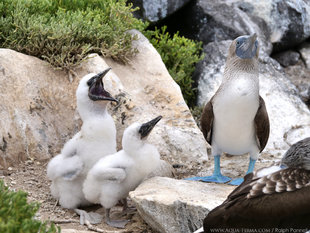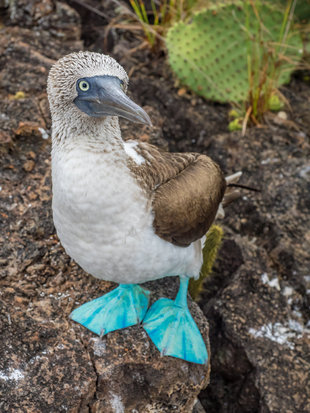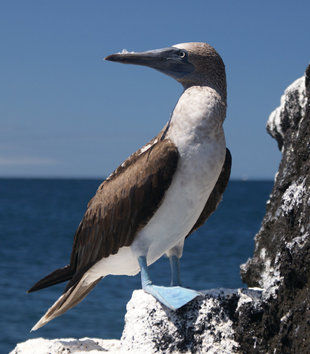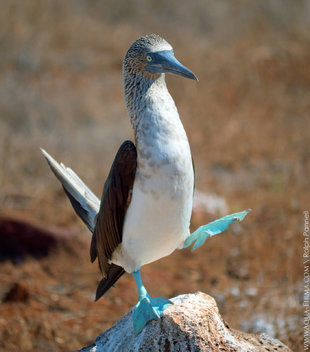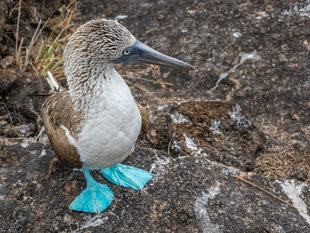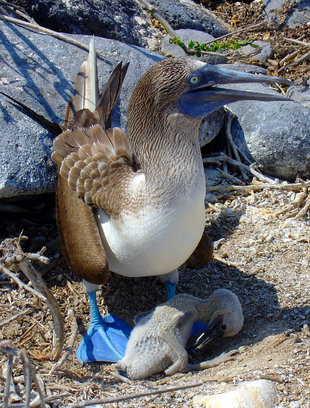Blue Footed Boobies (Sula nebouxii) require little assistance in identification. They are widespread in the Galapagos Islands; and typical of an island with no natural predator, they don't mind you coming close enough to have a good look at their feet.
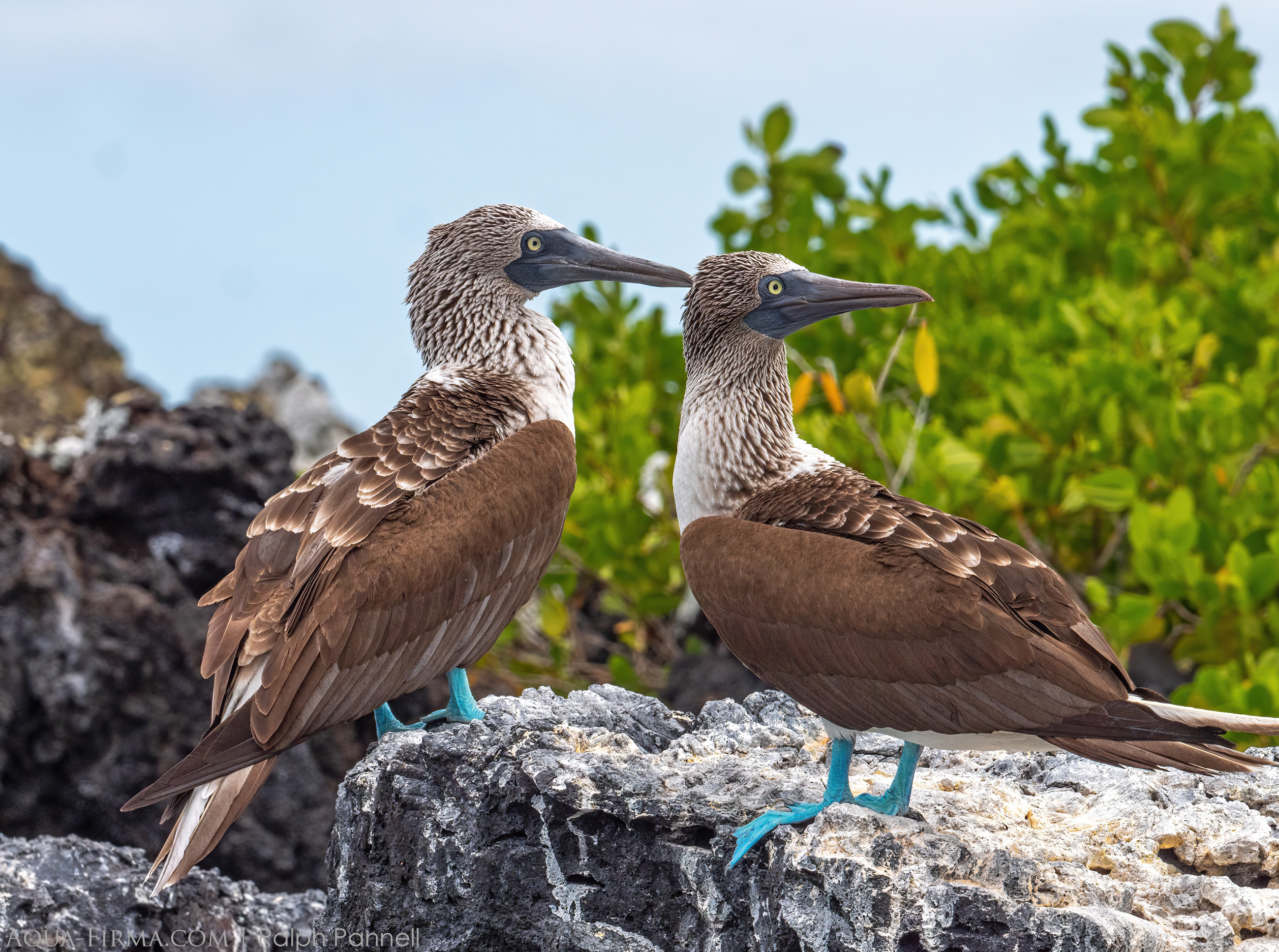
Like the gannets they are related to, they are attractive birds to see; and impressive to watch dive into the sea. Once they have taken aim of a school of anchovies, they fly to a high vantage point before maximising their length (up to 84cm) and minimising their girth as they rain down like a squadrons of spears. As they break through a mass of fish, they stun and split the shoal, picking off fish ad they trap them against the surface on their ascent back up to the air.
But why the blue feet?
Studies have shown that the bluer the feet, the better the chances of being selected as a mate. This is particularly true of the males, whose feet are generally bluer. Males invest alot of time and energy exhibiting their feet to desired mates with a courtship dance involving exaggerated lifting and stomping. Females are demonstrably selective and will return the moves of a selected male to begin a shared courtship display. This involves two birds extending their necks and beaks skywards, whilst opening their wings and hooting like Peruvian pipers. The gifting of sticks and other nesting materials is the next stage, leading to the building of a ground nest, mating, egg laying and then a brood of fluffy white chicks.
Males have also be shown to be selective; and here's why. When a Blue Footed Booby eats well, natural carotenoid pigments give blue colour to the bird's feet. Deprive the bird its food, the colour soon drains; even within a day or so. As soon as the bird starts feeding again, colour begins to return.
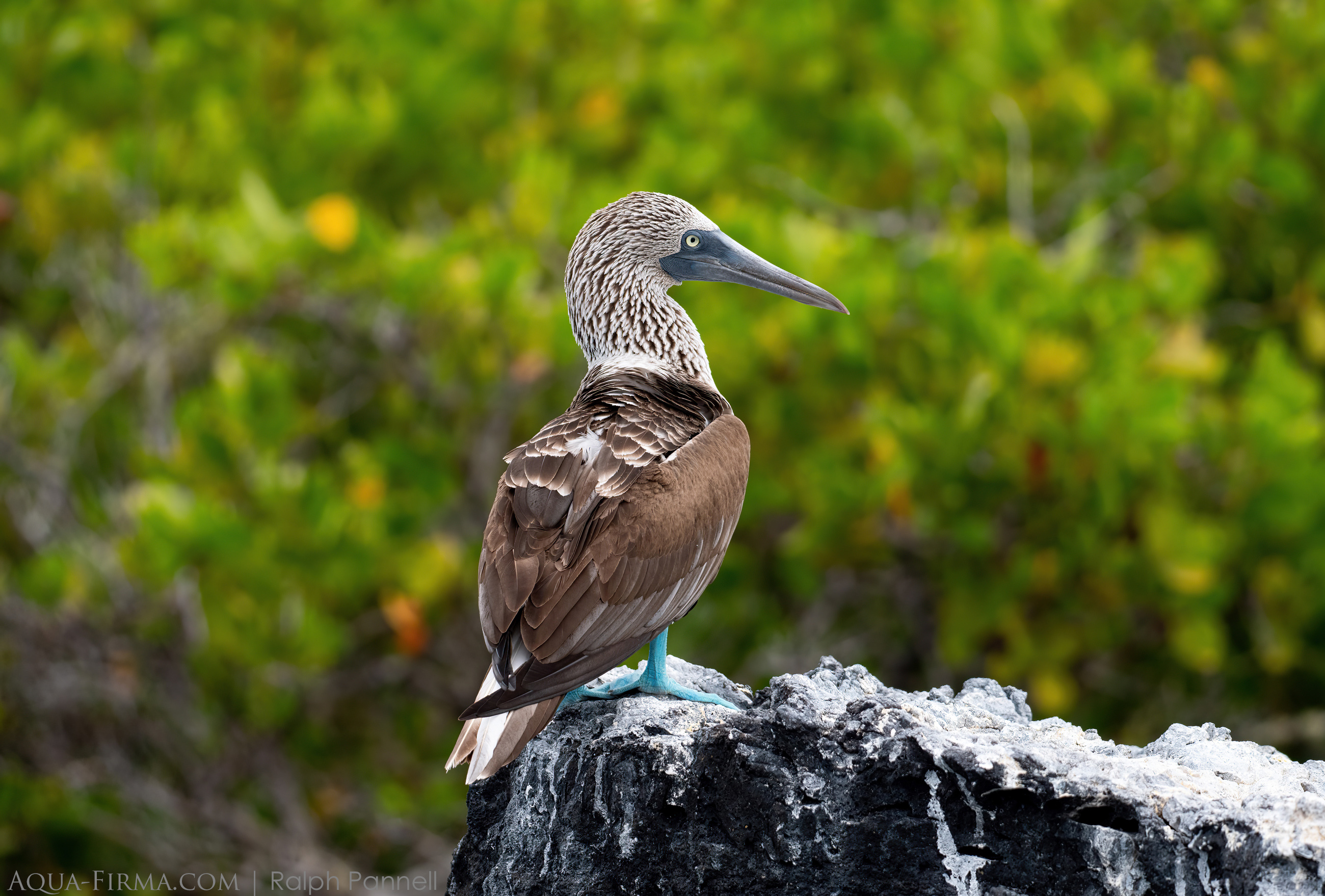
Blue feet are also an indicator of general health. Researchers have given low level challenges to boobies and seen that the colour of their feet fades. So, all in all, Blue Footed Boobies have adapted to select the best-fed disease free partners to mate with.
Where & When to See Blue-footed Boobies
Around half of the World's breeding pairs of Blue-footed Boby live in the Galapagos islands. You can see these birds on most of the islands all of the year, but June is particularly good for opportunities to see their courtship displays.
June is when we run our Galapagos Wildlife Marine Life & Photography island-hopping safari, achieving particularly close encounters with Blue-footed Boobies in the far southwest of Isabela. This is amongst lava tunnels eroded into isolated rock islands, some of which maintain natural bridge connections. This location is excellent for seeing fledglings in their nests later in the year.
Las Tintoreras off the southeastern coast of Isabela is one of the best coastal spots to see Blue-footed Boobies. In addition to appearing on coastal rocks, you can also photograph them against a backdrop of mangroves.
Española Island is a great location for approaching Blue-footed Booby nests, as well as seeing their cousins, the Nazca Booby; plus another of the Galapagos's famous courtship birds: the Waved Albatros.

